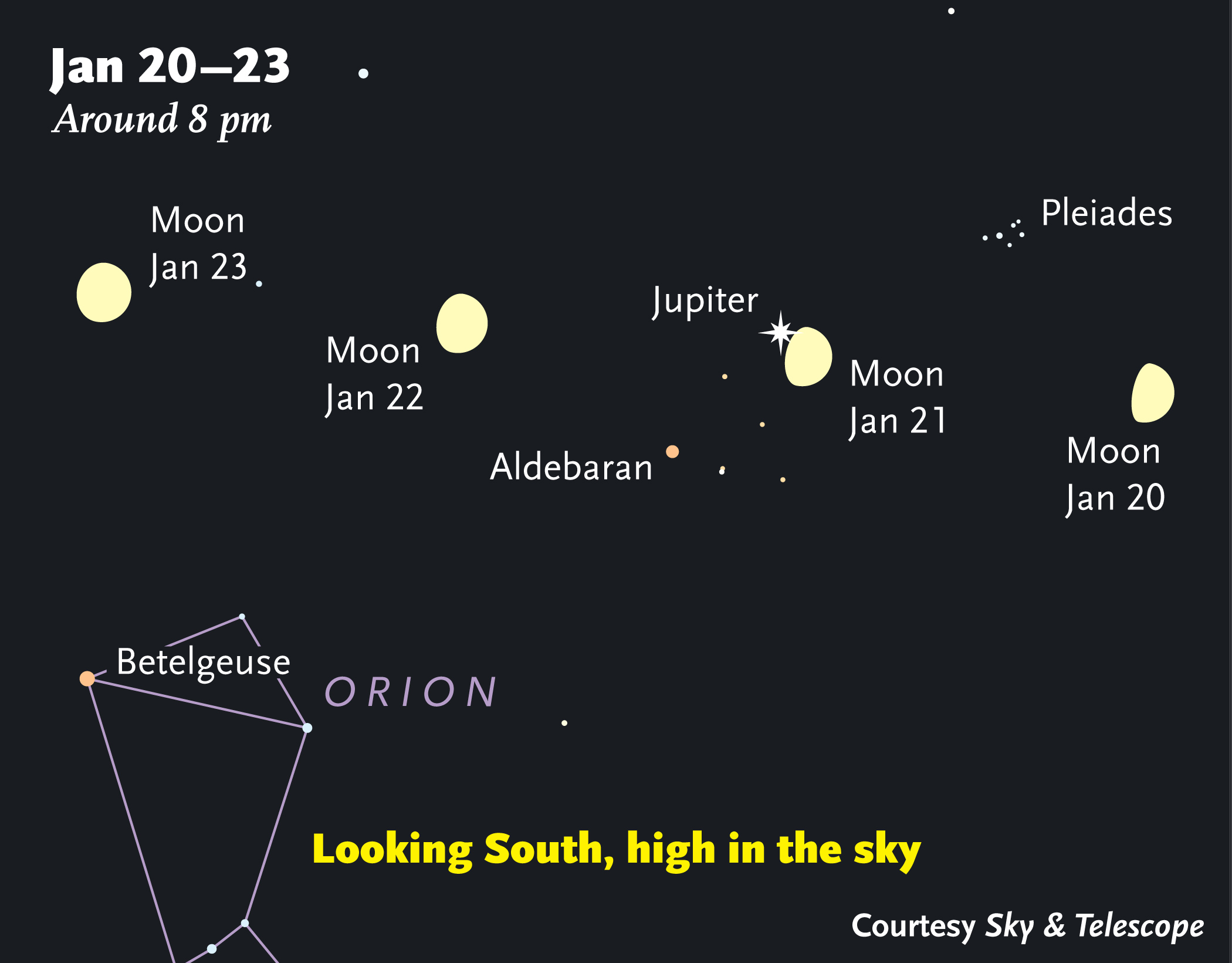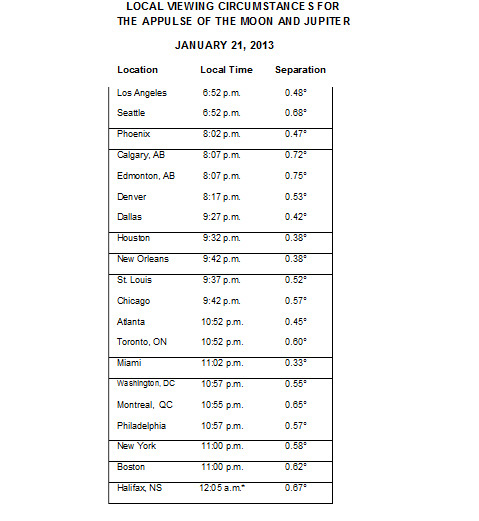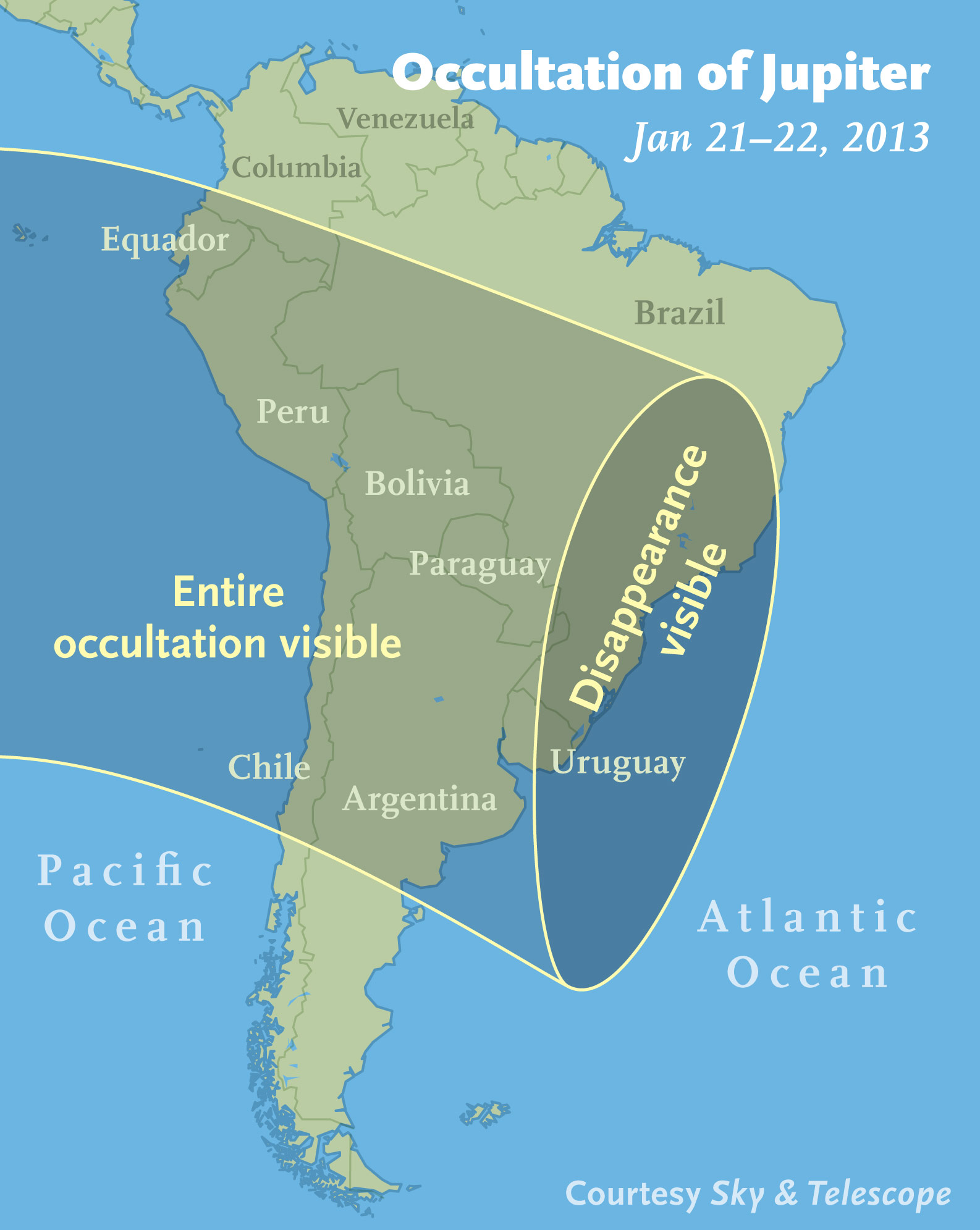Jupiter and Moon Have Close Encounter Tonight: See It Live Online

The planet Jupiter and Earth's moon will star is a dazzling spectacle in the night sky tonight, weather permitting. But even if bad weather spoils your view, you can see celestial show live online in a free webcast.
Jupiter and the moon will appear just a finger-width apart tonight (Jan. 21) for stargazers across North America. In South America, some observers may even see Jupiter slip behind the moon in an amazing occultation. The extreme close encounter between the planet and moon is a must-see, even if clouds block your view.
The online skywatching website Slooh Space Camera will provide free telescope views of Jupiter's encounter with the moon during a 30-minute webcast that begins at 9 p.m. EST (0200 GMT). You can watch the webcast of Jupiter and the moon on SPACE.com here tonight.
Slooh president Patrick Paolucci, astronomer Bob Berman of Astronomy Magazine and astro-imager Matt Francis of the Prescott Observatory will present the live views of Jupiter and the moon. You can access webcast directly here: http://www.slooh.com.
"By good fortune, the Great Red Spot will be traveling across the middle of Jupiter's disk during Slooh's live broadcast," Slooh officials said. Jupiter's Great Red Spot is a colossal storm at least twice the size of Earth that has been observed on Jupiter since the 1600s.
Jupiter and the moon will appear at their closest at different times depending on your viewing location, according to Sky & Telescope magazine. In Eastern North America, it will occur at 11:30 p.m. EST while further inland it occurs at 10 p.m. CST. Moving westward, the peak viewing time will be at 8:30 p.m. MST for stargazers in the Mountain Time Zone, while West Coast observers should look up at 7 p.m. PST.
There is even a chance for stargazers to see Jupiter in daylight, magazine officials said.
Breaking space news, the latest updates on rocket launches, skywatching events and more!
"You'll also get an opportunity to attempt an unusual feat: spotting Jupiter in the late afternoon, before the sun sets," says Tony Flanders, associate editor at Sky & Telescope magazine and host of SkyWeek on PBS. "First locate the moon medium-high in the east; then look a few moon-widths left or lower left of the moon for Jupiter. It should be easy to spot with binoculars if the air is clear."
More seasoned amateur astronomers with good telescopes may want to search for Jupiter's moon Europa with their telescopes. The icy moon will cross in front of Jupiter as seen from Earth tonight between 8:13 p.m. to 10:37 p.m. EST (5:13 to 7:37 p.m. PST/ 0113 and 0337 GMT). Europa's shadow on the moon will cross Jupiter a bit later, from 10:22 p.m. to 12:46 a.m. EST (7:22 to 9:46 p.m. PST/0322 to 0546 GMT), magazine officials said.
There is one more bright object to check out during tonight's cosmic display: the bright star Aldebaran. The star will shin to the lower left of Jupiter throughout the evening. The star clusters Hyades and Pleiades also promise to dazzle, according to Sky & Telescope.
While Jupiter and the moon will appear extremely close to each other in the night sky, tonight's event won't be the last for the two objects. On March 17, Jupiter and the moon will have another change to appear to have a celestial encounter.
Editor's note: If you snap an amazing photo of Jupiter and the moon, or any other night sky view, that you'd like to share for a possible story or image gallery, send photos, comments and your name and location to managing editor Tariq Malik at spacephotos@space.com.
You can follow SPACE.com Managing Editor Tariq Malik on Twitter @tariqjmalik. Follow SPACE.com for the latest in space science and exploration news on Twitter @Spacedotcom and on Facebook.

Tariq is the award-winning Editor-in-Chief of Space.com and joined the team in 2001. He covers human spaceflight, as well as skywatching and entertainment. He became Space.com's Editor-in-Chief in 2019. Before joining Space.com, Tariq was a staff reporter for The Los Angeles Times covering education and city beats in La Habra, Fullerton and Huntington Beach. He's a recipient of the 2022 Harry Kolcum Award for excellence in space reporting and the 2025 Space Pioneer Award from the National Space Society. He is an Eagle Scout and Space Camp alum with journalism degrees from the USC and NYU. You can find Tariq at Space.com and as the co-host to the This Week In Space podcast on the TWiT network. To see his latest project, you can follow Tariq on Twitter @tariqjmalik.


